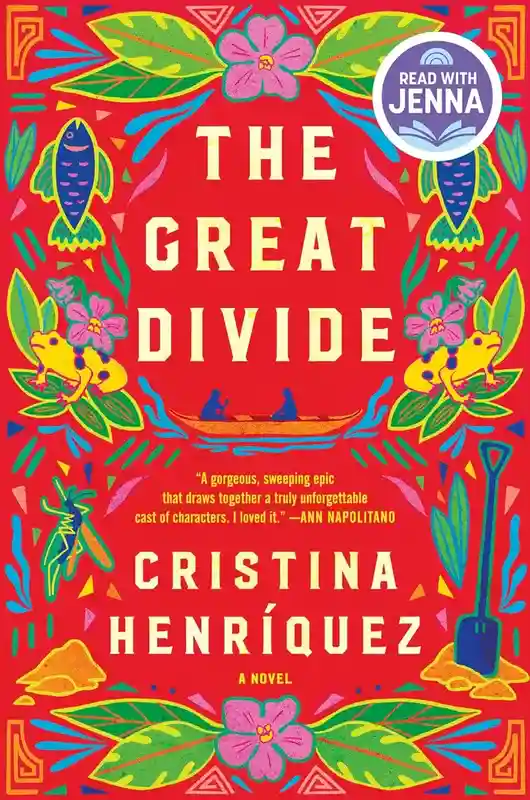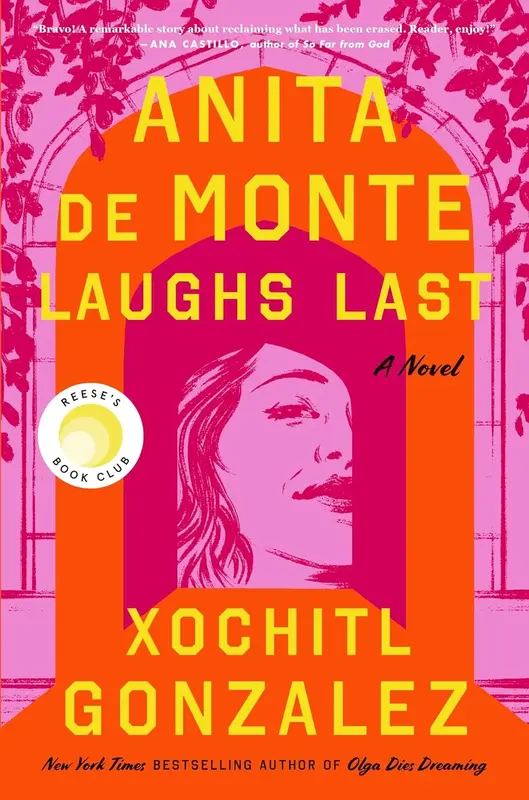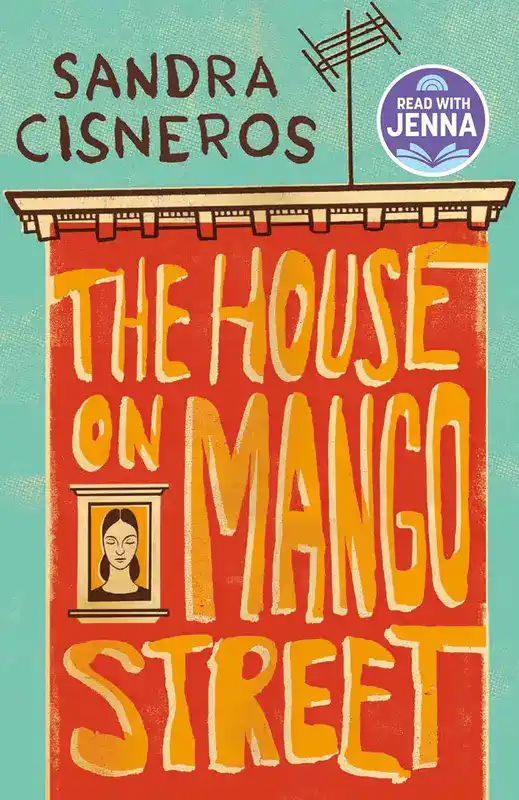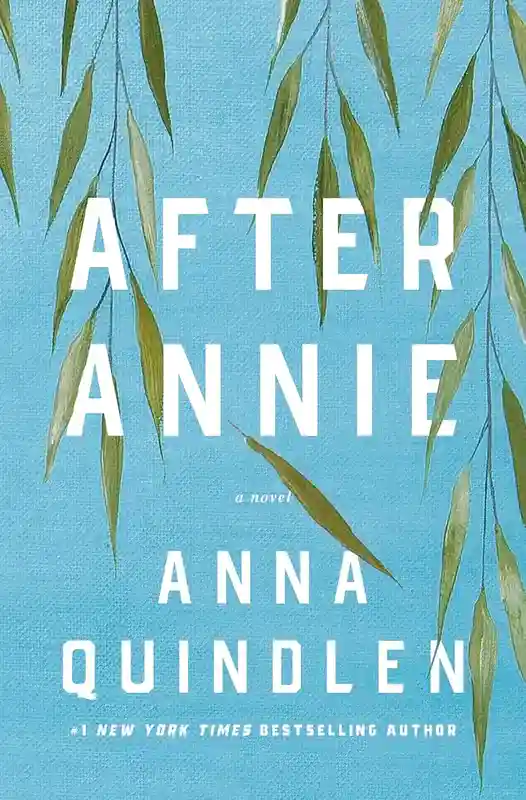This post may contain affiliate links. Read more here.
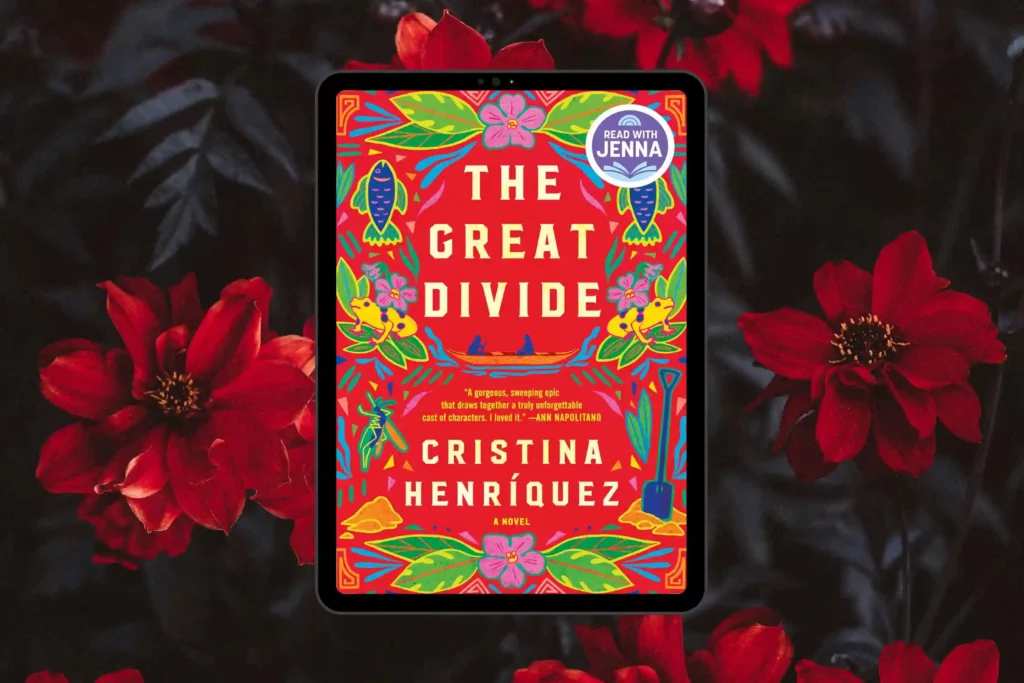
Book club questions for The Great Divide by Cristina Henríquez explore the themes of ambition, sacrifice, community, identity, and the impact of historical events on individual lives.
For someone like me who isn’t from Panama, this novel opened my eyes to a part of history I hadn’t known much about before. The book sheds light on the challenges faced by workers during the construction of the Panama Canal, which was new information for me.
Henriquez tells a touching story about family, love, and loss within this historical context, making the book really interesting. Her writing brings the Canal’s history to life in a way that keeps you engaged throughout, while her background adds depth to the story, offering fresh perspectives on this lesser-known piece of history.
Let me know your thoughts about the novel! Feel free to comment below.
The Great Divide by Cristina Henríquez
In this blog post you will find the discussion questions for The Great Divide by Cristina Henríquez.
The portrayal of historical events within the narrative may spark conversations about their significance and accuracy, as well as their impact on the characters’ lives. The setting of the story, particularly the vivid depiction of Panama during the construction of the canal, could be explored for its role in shaping the atmosphere and themes of the novel.
Have a wonderful book club discussion! ✨
About the Author | Book Club Questions | Additional Recommendations
About the Story
The Great Divide is a novel set during the construction of the Panama Canal, a massive engineering project in history.
It follows the lives of various characters, including Francisco, a local fisherman who resents foreign involvement in his country, his son Omar who works as a digger in the canal zone, Ada, a brave teenager from Barbados seeking work to help her sick sister, and John Oswald, a scientist dedicated to eliminating malaria.
As their paths intertwine, the novel explores themes of ambition, loyalty, and sacrifice, shedding light on the diverse individuals whose lives were affected by the canal’s construction. It’s a story of ordinary people doing extraordinary things, often overlooked by history.
Release date: March 5, 2024
Genre: Hispanic American Literature & Fiction
Hardcover: 336 pages
Publisher: Ecco
About the Author
Cristina Henríquez is a well-known American author known for her heartfelt stories about identity, belonging, and the human experience. She was born in Delaware to a Panamanian father and a mother from New Jersey, and her diverse upbringing strongly influences her writing. Spending summers in Panama allowed her to observe family dynamics, which she later incorporated into her work.
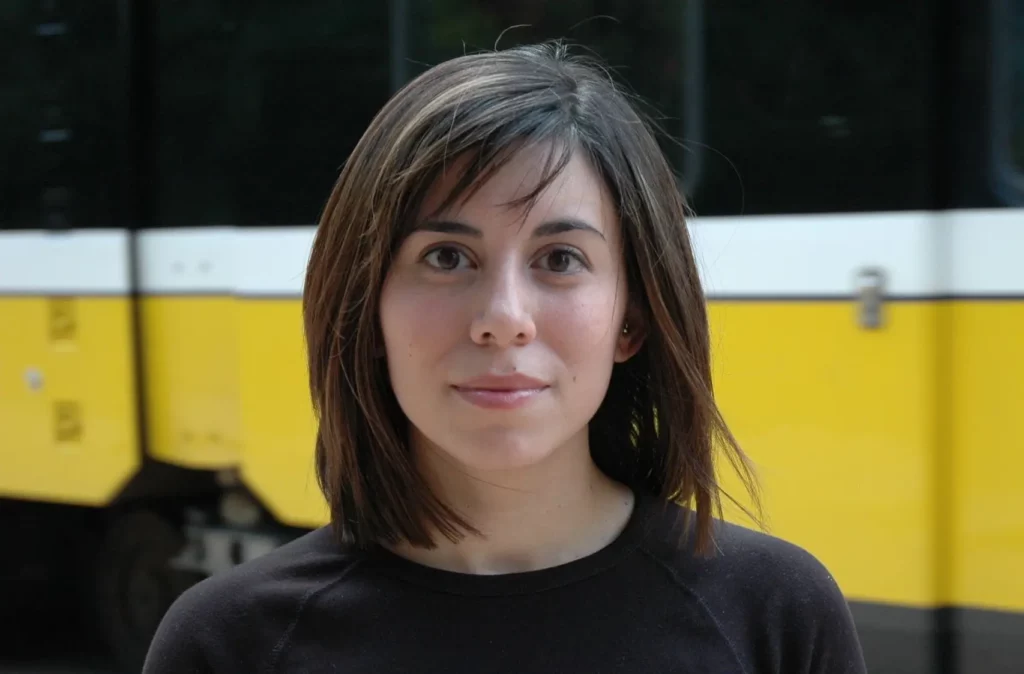
Henríquez’s writing journey began in high school when a classmate gave her a journal, sparking her passion for writing. She went on to study English at Northwestern University and earned her MFA from the respected Iowa Writers’ Workshop.
Her collection Come Together, Fall Apart and debut novel The World in Half explore the lives of young Panamanians and themes of identity against the backdrop of Chicago and Panama. However, it was The Book of Unknown Americans that brought her widespread recognition, earning accolades such as being named the 2014 novel of the year by The Daily Beast. Her latest novel, The Great Divide, delves into the construction of the Panama Canal.
Henríquez’s works are loved by readers worldwide for their vivid characters and immersive storytelling. She currently lives in Chicago, Illinois, where she continues to write compelling narratives.
Book Club Questions for The Great Divide
Disclaimer: the following discussion questions contain spoilers, so proceed with caution if you haven’t finished the book yet.
- Which character’s backstory or inner conflicts intrigued you the most, and why?
- Discuss the ways in which Henriquez portrays the complexities of identity and belonging through characters like Ada, Francisco, and John Oswald.
- If you could spend a day with one character from the novel, who would it be and what would you want to learn from them?
- How does the novel challenge or reinforce common perceptions of the Panama Canal’s construction and its impact on the local community?
- Describe the contrasting values between Francisco and Omar, the father-son duo in “The Great Divide.” Why does Francisco disapprove of Omar working on the Panama Canal, and what does the canal represent to each of them?
- Have you ever experienced a life event that unexpectedly led you to a new place or situation, similar to the characters in the novel? If given the chance, would you make the same decision again?
- “The Great Divide” explores various forces shaping Panama’s future, including politics, power dynamics, community, faith, and family. Which force do you consider the most influential in the story, and why?
- The cultural diversity depicted in the novel, from Ada’s Barbadian heritage to Francisco’s Panamanian roots, is an important factor. How does Henriquez navigate these cultural intersections and portray the characters’ experiences authentically?
- In what ways does the novel shed light on underrepresented voices and untold stories from history? Discuss the significance of highlighting these perspectives in literature.
- Analyze the themes of injustice and resilience throughout the novel. How do characters like Ada and Francisco navigate adversity and strive for a better future despite facing significant challenges?
- Esme, Omar’s mother, plays a significant role despite her absence. How does Esme’s presence resonate throughout the narrative, and do you believe it’s possible to maintain a connection with someone who is physically absent?
- Valentina expresses a deep attachment to her hometown, Gatún, reflecting on its significance in her life. Have you ever felt a strong connection to a particular place? What does the concept of “home” mean to you?
- Francisco muses on the necessity of faith to envision the future. What do you think it takes to maintain hope for the future, and what are the consequences of losing that faith?
- Consider the role of power dynamics and exploitation in the narrative. How do the foreign powers involved in the canal’s construction impact the lives of local residents, and what does this reveal about broader issues of colonialism and imperialism?
- Discuss moments of triumph and perseverance in the face of hardship. How do characters find strength and solidarity in times of struggle?
- What is the significance of the novel’s structure, including its use of multiple perspectives and shifting timelines? How does this narrative approach enhance or detract from your reading experience?
- Identify recurring symbols or motifs in the story, such as the canal itself, sickness, and familial bonds. How do these symbols contribute to the overarching themes and character development?
- Consider the role of storytelling within the novel. How do characters’ personal narratives and family histories shape their identities and relationships?
- What did you think about the complexities of relationships portrayed in the novel, from familial bonds to friendships and romantic connections. How do characters navigate loyalty, betrayal, and moral ambiguity in their interactions with others?
- Molly’s experience with her photographs highlights the theme of recording history. How does the novel comment on the recording and preservation of historical events? Can you identify other instances where this theme is explored?
- Miller’s treatment of the men under his charge raises questions of responsibility. To what extent do you believe Miller is accountable for Berisford’s death, and why?
- Marian reflects on John’s preference for a potted orchid over a wild one. What deeper meaning does this hold for Marian, and how do other characters in the novel seek control or freedom?
- Reflect on moments of ethical dilemma or moral ambiguity faced by characters throughout the story. How do their choices reflect larger societal tensions and power dynamics?
- Discuss the significance of forgiveness and reconciliation in the novel. How do characters grapple with past traumas and seek redemption amidst personal and collective struggles?
- Aside from the physical divide of the canal, what other divisions, whether physical or metaphorical, are present in the novel?
- Explore the similarities and differences between Ada and Omar’s situations, particularly in their family dynamics. How much common ground is necessary to truly understand someone?
- Consider the contemporary relevance of the novel’s themes, particularly in relation to issues of social justice, globalization, and environmental sustainability. How do the historical events depicted in the novel resonate with present-day challenges and movements?
- Think about your own cultural and historical perspectives after reading “The Great Divide.” How has the novel expanded your understanding of Panama’s history and its broader significance?
- Discuss the potential for literature to serve as a platform for amplifying marginalized voices and challenging dominant narratives. In what ways does “The Great Divide” contribute to this broader conversation?
Additional Recommendations
Hope you enjoyed the book club discussion questions and reading guide for The Great Divide by Cristina Henríquez. Here are some more of my book club recommendations from this author, with themes related to this book, along with their synopses:
Anita de Monte Laughs Last by Xochitl Gonzalez
New York Times bestselling author Xochitl Gonzalez delivers a mesmerizing novel about a first-generation Ivy League student who uncovers the genius work of a female artist decades after her suspicious death
1985. Anita de Monte, a rising star in the art world, is found dead in New York City; her tragic death is the talk of the town. Until it isn’t. By 1998 Anita’s name has been all but forgotten―certainly by the time Raquel, a third-year art history student is preparing her final thesis. On College Hill, surrounded by privileged students whose futures are already paved out for them, Raquel feels like an outsider. Students of color, like her, are the minority there, and the pressure to work twice as hard for the same opportunities is no secret.
But when Raquel becomes romantically involved with a well-connected older art student, she finds herself unexpectedly rising up the social ranks. As she attempts to straddle both worlds, she stumbles upon Anita’s story, raising questions about the dynamics of her own relationship, which eerily mirrors that of the forgotten artist.
Moving back and forth through time and told from the perspectives of both women, Anita de Monte Laughs Last is a propulsive, witty examination of power, love, and art, daring to ask who gets to be remembered and who is left behind in the rarefied world of the elite.
The House on Mango Street by Sandra Cisneros
A coming-of-age classic about a young girl growing up in Chicago.
The House on Mango Street is one of the most cherished novels of the last fifty years. Readers from all walks of life have fallen for the voice of Esperanza Cordero, growing up in Chicago and inventing for herself who and what she will become. “In English my name means hope,” she says. “In Spanish it means too many letters. It means sadness, it means waiting.”
Told in a series of vignettes—sometimes heartbreaking, sometimes joyous—Cisneros’s masterpiece is a classic story of childhood and self-discovery and one of the greatest neighborhood novels of all time. Like Sinclair Lewis’s Main Street or Toni Morrison’s Sula, it makes a world through people and their voices, and it does so in language that is poetic and direct. This gorgeous coming-of-age novel is a celebration of the power of telling one’s story and of being proud of where you’re from.
After Annie by Anna Quindlen
Anna Quindlen’s trademark wisdom on family, friendship, and the ties that bind us are at the center of this novel about the power of love to transcend loss and triumph over adversity, by the author of Still Life with Bread Crumbs and One True Thing.
When Annie Brown dies suddenly, her husband, her children, and her closest friend are left to find a way forward without the woman who has been the lynchpin of all their lives. Bill is overwhelmed without his beloved wife, and Annemarie wrestles with the bad habits her best friend had helped her overcome. And Ali, the eldest of Annie’s children, has to grow up overnight, to care for her younger brothers and even her father and to puzzle out for herself many of the mysteries of adult life.
Over the course of the next year what saves them all is Annie, ever-present in their minds, loving but not sentimental, caring but nobody’s fool, a voice in their heads that is funny and sharp and remarkably clear. The power she has given to those who loved her is the power to go on without her. The lesson they learn is that no one beloved is ever truly gone.
Written in Quindlen’s emotionally resonant voice and with her deep and generous understanding of people, After Annie is about hope, and about the unexpected power of adversity to change us in profound and indelible ways.
Happy reading! ❤️
